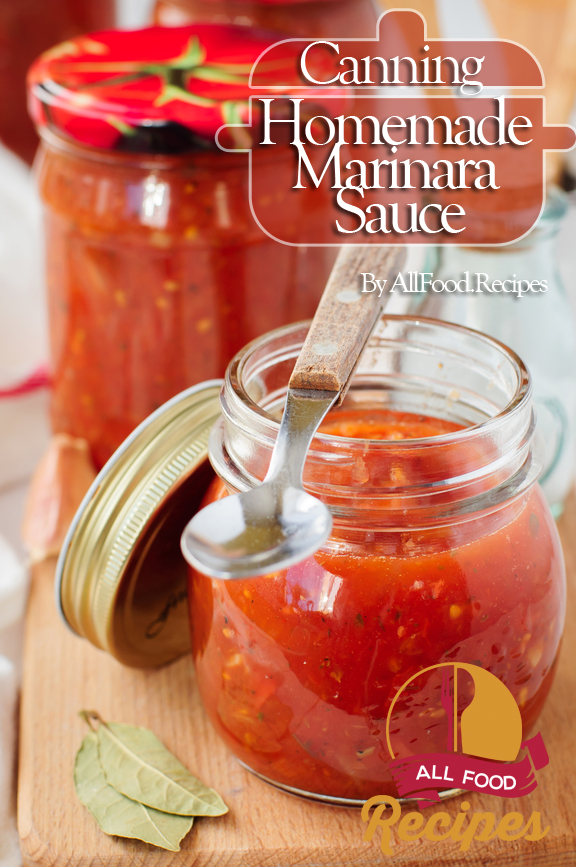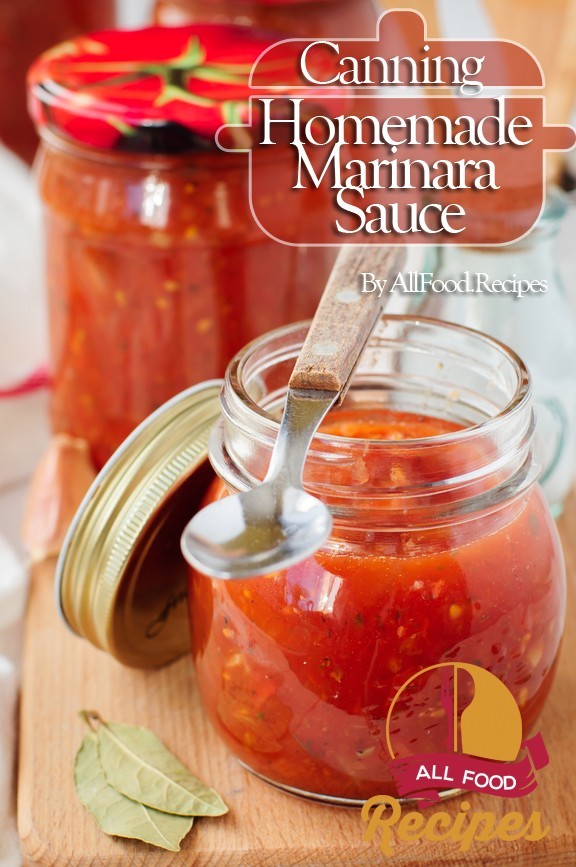Canning Homemade Marinara Sauce

No question that Marinara Sauce is the sauce I use most frequently in Italian recipes. Pesto runs a close second. This is a good basic vegetarian marinara sauce to:
serve over pasta, ravioli, or meatballs (check out my recipe for Italian Meatballs)
turn into a meat sauce by adding browned ground meat or crumbled meatballs or Italian sausage
turn into a seafood sauce by adding shrimp or clams
use as a pizza sauce
use as the base sauce in lasagna
use to make baked chicken parmesan (smother chicken breasts with this marinara sauce, generously sprinkle with parmesan cheese, top with a layer of mozzarella cheese and bake for 35-45 minutes at 350º)
use as a sauce on meatball sandwiches
use as a sauce on my Parmesan Chicken Sandwiches
I love this rich, red Italian sauce. An added bonus is that it is very nutritious.
Ingredients:
- 14lb fresh tomato
- 2 onions (chopped)
- 15-20 cloves fresh garlic (well minced)
- 1/2 cup fresh basil
- 1/2 cup balsamic vinegar
- 3 T brown sugar
- 4 T fresh oregano
- 1 T Cavender’s seasoning
- 1-2 small cans tomato paste (optional)
- Splashes of lemon juice in each jar
Step 1: Prep your jars and lids
Wash your jars and lids with hot, soupy water and rinse well. I ended up using 7 pint jars, but prep a couple more just to be safe. Fill the water bath canner (boil canner) half full of water while putting your open jars in (and filling the jars with water too). Make sure the water covers the jar rims by about an inch of water. Turn the burner on high and let the jars boil while you work. (Need them to boil for at least 10 minutes. This sterilizes your jars.) Put the sealing lids face up in a sauce pan, and put the screw lids on top of them. Fill the sauce pan with water and let them almost boil – simmer while you work.
Step 2: Blanch your tomatoes
Wash the tomatoes. Set a large pot of water to boil, and get another large bowl of ice water ready. When the stove water is about to be at the rolling boiling state, turn the eat down a smudge and spoon in as many tomatoes as fits in one layer (they float). Some tomatoes were ready in about 30 seconds, but others took almost 2-3 minutes. The riper the fruit, the faster they blanche. The best way to tell on tomatoes, is the skin will start to split. When the toms are ready, spoon them out with a slotted spoon into the ice bath.
This took forever with 14 pounds of tomatoes! Ugh! But it’s worth it! Hang in there!
The skins should sluff off pretty easily at this point. Get all the skins off, cut out the core/stem part, and roughly chop up your tomatoes. Toss them in a bowl and set aside.
Step 3: Sauté garlic and onions
I just used the stock pot I intended to use for the whole sauce to prevent dirtying more dishes. In your stock pot or a sauce pan, heat 2 T olive oil. Toss in the onion, and cook for about 2 minutes while it caramelizes. Add the garlic and cook for about 2 more minutes.
Step 4: Add the rest and simmer for a while
Add the chopped tomatoes, minced basil, minced oregano, Cavendar’s seasoning and stir until blended. Add the balsamic vinegar and stir. Add the brown sugar slowly and stir. You can add a small can of tomato paste if you’d like, but my tomatoes were thick enough that I didn’t need to.
Let the sauce simmer for about 2 hours. Stir occasionally. It should thicken up and reduce by at least 2 inches. If after an hour it hasn’t reduced or thickened up much, add a can of tomato paste.
Step 5: Can the sauce
Take the jars out of the water bath, empty the water out of them, and set them on a kitchen towel on the counter. Splash about a 1/4 teaspoon of lemon juice in the bottom of each jar. Ladle the sauce into the jars leaving about 1/4 inch to 1/2 inch head space. Seal the lids on “finger-tight” (meaning, don’t use your palm and whole hand or it will be too tight), and set the jars back into the water bath. Cover the canner and when the water is boiling, set your timer for 35 minutes if using pints and 45 minutes if using quarts.
Step 6: Remove jars and cool
When you’re done boiling the jars, remove them from the canner, set them back on the kitchen towel on the counter, and let them cool for a few hours. You should hear the lids popping, which means they’re sealing. Set the jars in a dark, cool place to store. The next day, you can unscrew the screw part of the lid and lightly test the seal. If it doesn’t resist and stay put, then put that jar in the fridge and use within a few weeks.
YUMO I have spaghetti sauce for at least half the winter!
Full recipe credit: Tinyprairiefarm









